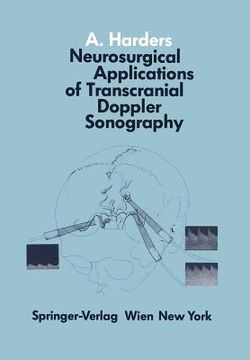Share
neurosurgical applications of transcranial doppler sonography
A. Harders
(Author)
·
Springer
· Paperback
neurosurgical applications of transcranial doppler sonography - Harders, A.
Choose the list to add your product or create one New List
✓ Product added successfully to the Wishlist.
Go to My Wishlists
Origin: U.S.A.
(Import costs included in the price)
It will be shipped from our warehouse between
Thursday, May 30 and
Monday, June 17.
You will receive it anywhere in United Kingdom between 1 and 3 business days after shipment.
Synopsis "neurosurgical applications of transcranial doppler sonography"
In 1981, the Norwegian physiologist and cyberneticist, Rune Aaslid, developed a device which made it possible to apply the transcranial Doppler sonographic technique in man. In 1983, Dr. Albrecht Harders took on the project of working out a clinically practicable method that would allow atraumatic measurements to be made of the blood flow velocity in the large branches ofthe circle of Willis. The technique has now become a competitor of the conventional methods of measuring the intracranial hemodynamics, including angiography and the xenon method of cerebral blood flow measurement. Harders proceeded from the assumption that the measurement of the blood flow velocity is more relevant for clinical diagnoses than the usual volume flow measurements. He stresses the very valuable application of the technique in detecting cerebral vasospasm before and after aneurysm surgery. The changes in the blood flow velocities measured by transcranial Doppler sonography in the individual vessel segments of the circle of Willis are interpreted with respect to the various factors that can effect such changes (collateral circulation in the circle of Willis, diameter of the vessel, vascular resistance, the general cardiovascular situation, arterial partial CO pressure, autoregulatory factors, position of body). The rate of 2 complications associated with angiography has thus been reduced, since the best time both for angiography and for surgery can be determined, and continuous TCD examinations show when the patient is out of a critical phase of cerebral vasospasm.
- 0% (0)
- 0% (0)
- 0% (0)
- 0% (0)
- 0% (0)
All books in our catalog are Original.
The book is written in English.
The binding of this edition is Paperback.
✓ Producto agregado correctamente al carro, Ir a Pagar.

